From its founding in 1906, and in the words of Nicolas Bos, President and CEO of Van Cleef & Arpels, the Maison has ‘…always poetically brought a touch of liveliness to its masterpieces, inviting people in a dream-like world of vitality.’ Understandably, ballet, with movement and performance at its core has been a major source of inspiration for this expression of movement. Since 1941 dancing ballerinas with their highly decorative costumes have starred in Van Cleef & Arpels’ output.
Understanding Jewellery visits Van Cleef & Arpels' The Art of Movement at the Design Museum, London
The Art of Movement exhibition has just opened at the Design Museum, London, and here we share some of our highlights from this thoughtfully curated exhibition featuring close to one hundred exquisite jewels
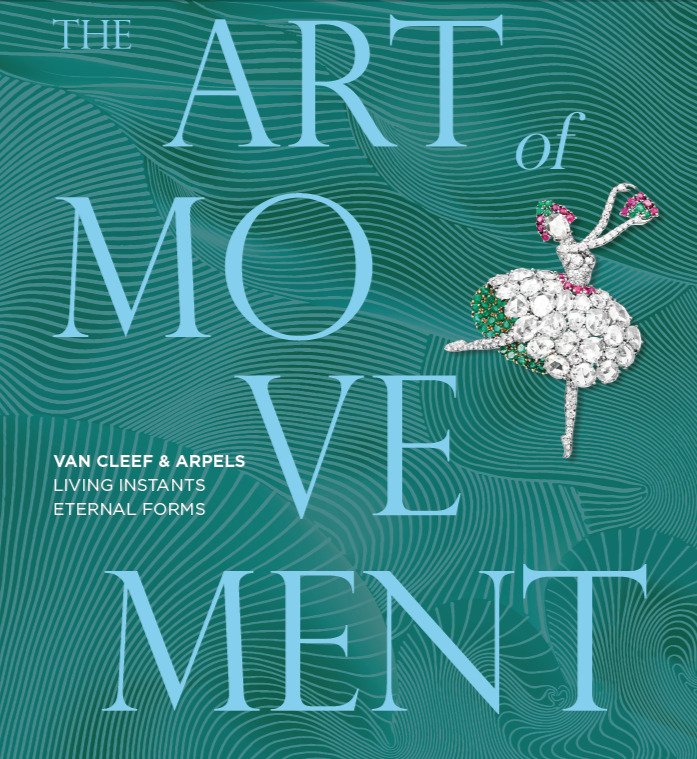
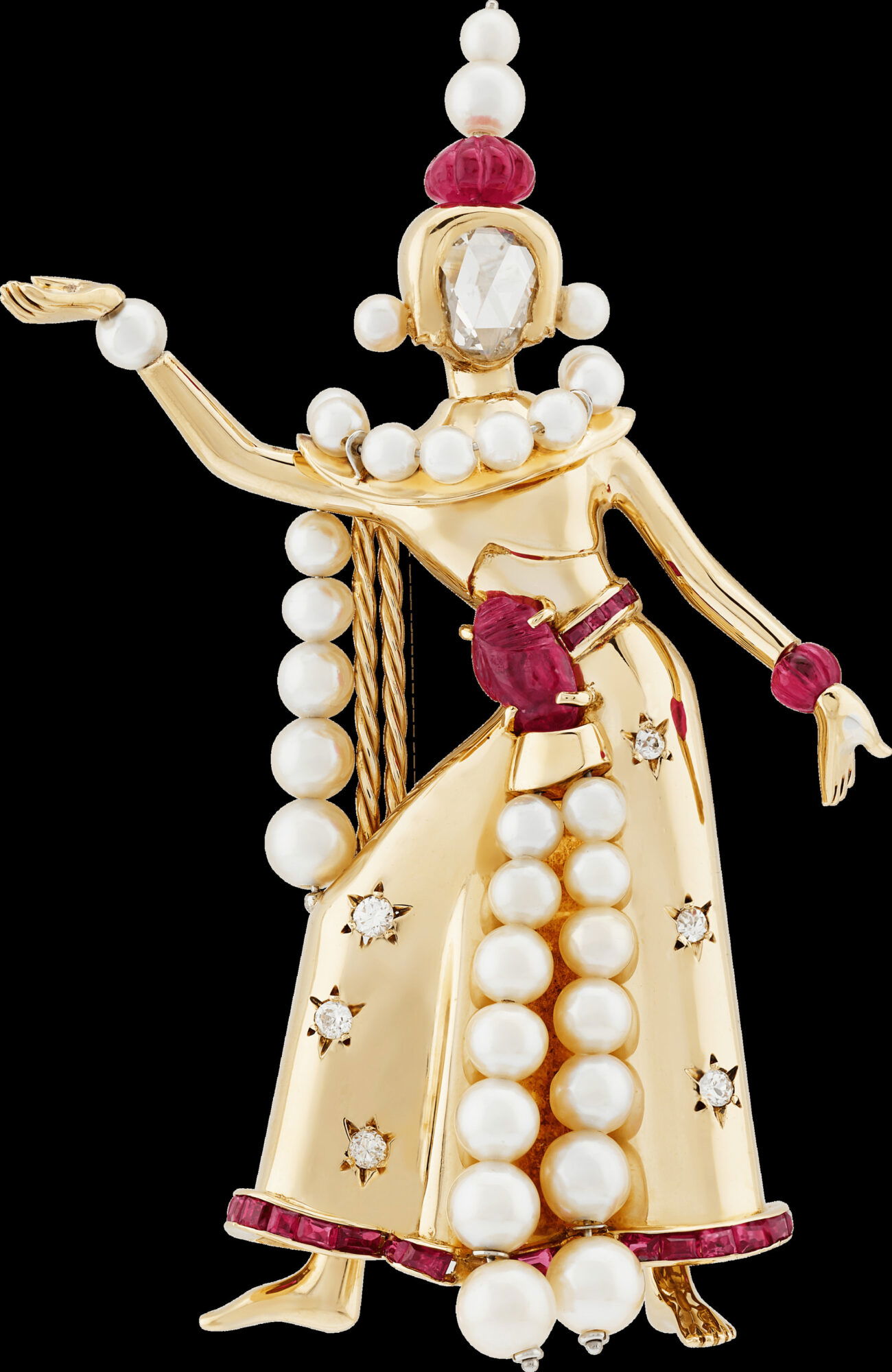
Within the exhibition, Dance presents many of these animated, miniature works of art, however, we were drawn to this fine, bold Balinese dancer clip in yellow gold, white gold, rubies, cultured pearls and diamonds, from 1969. Travel and far-off cultures have always also been major influences for Van Cleef & Arpels and Balinese dancer captures these elements, with the engraved rubies a nod to those often seen in oriental jewels. It is unusual to find pearls in dancer clips but as the wearer moves they provide an additional sway and enhance the clip’s distinctive character.
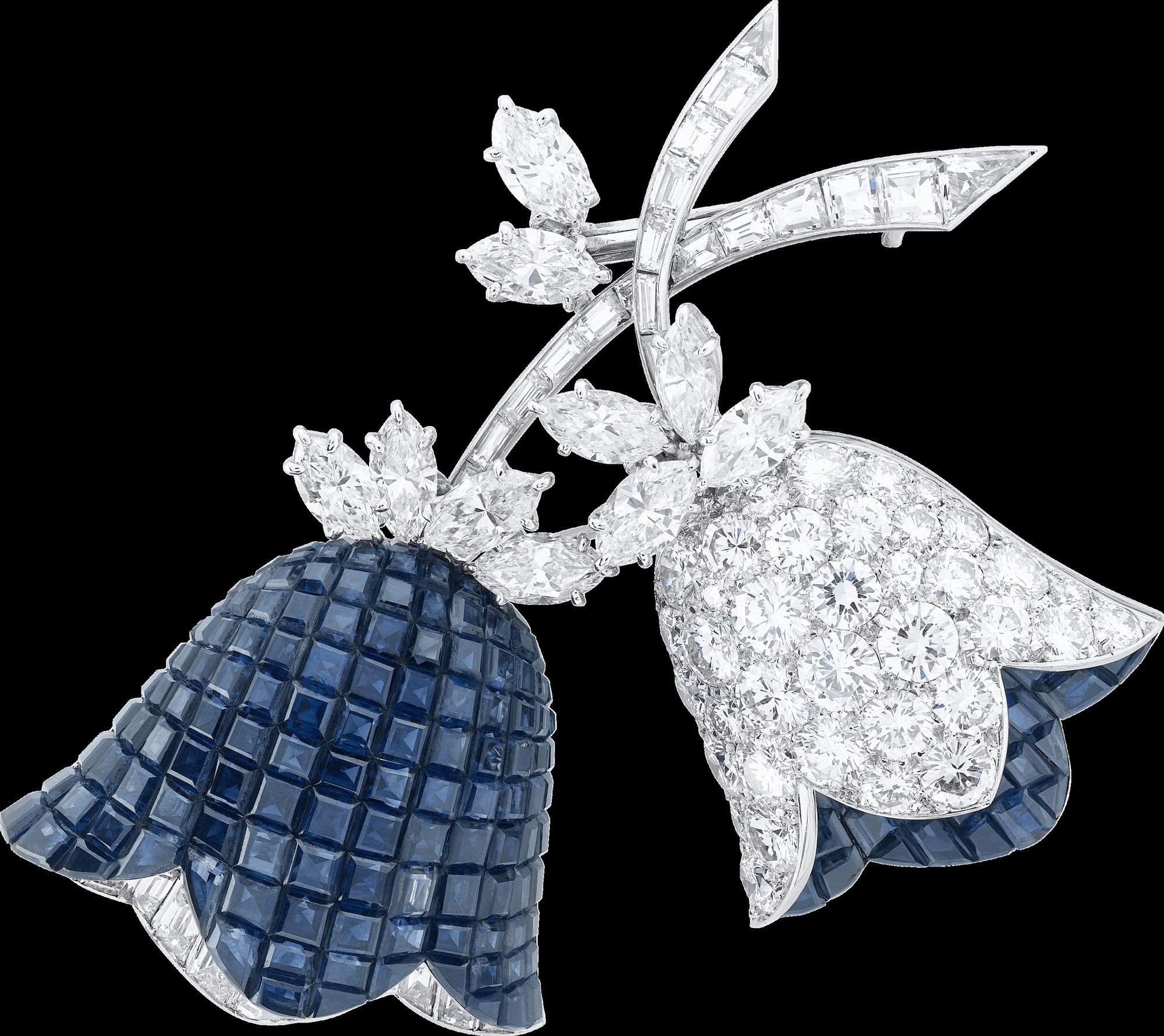
From the same year, 1969, the Bellflower clip, in platinum, yellow gold, sapphires and diamonds, showcases Van Cleef & Arpels’ Mystery Set technique. Patented in 1933, the process allows precious stones to be set with no prong or metal component visible. The lattice into which notched stones are placed is key to the overall design as well as providing the physical structure of the jewel. The aim in setting stones in this way is to maximise both their volume and beauty; the Bellflower clip truly shines, with the alternate use of sapphires and diamonds on either flower particularly appealing and fun.
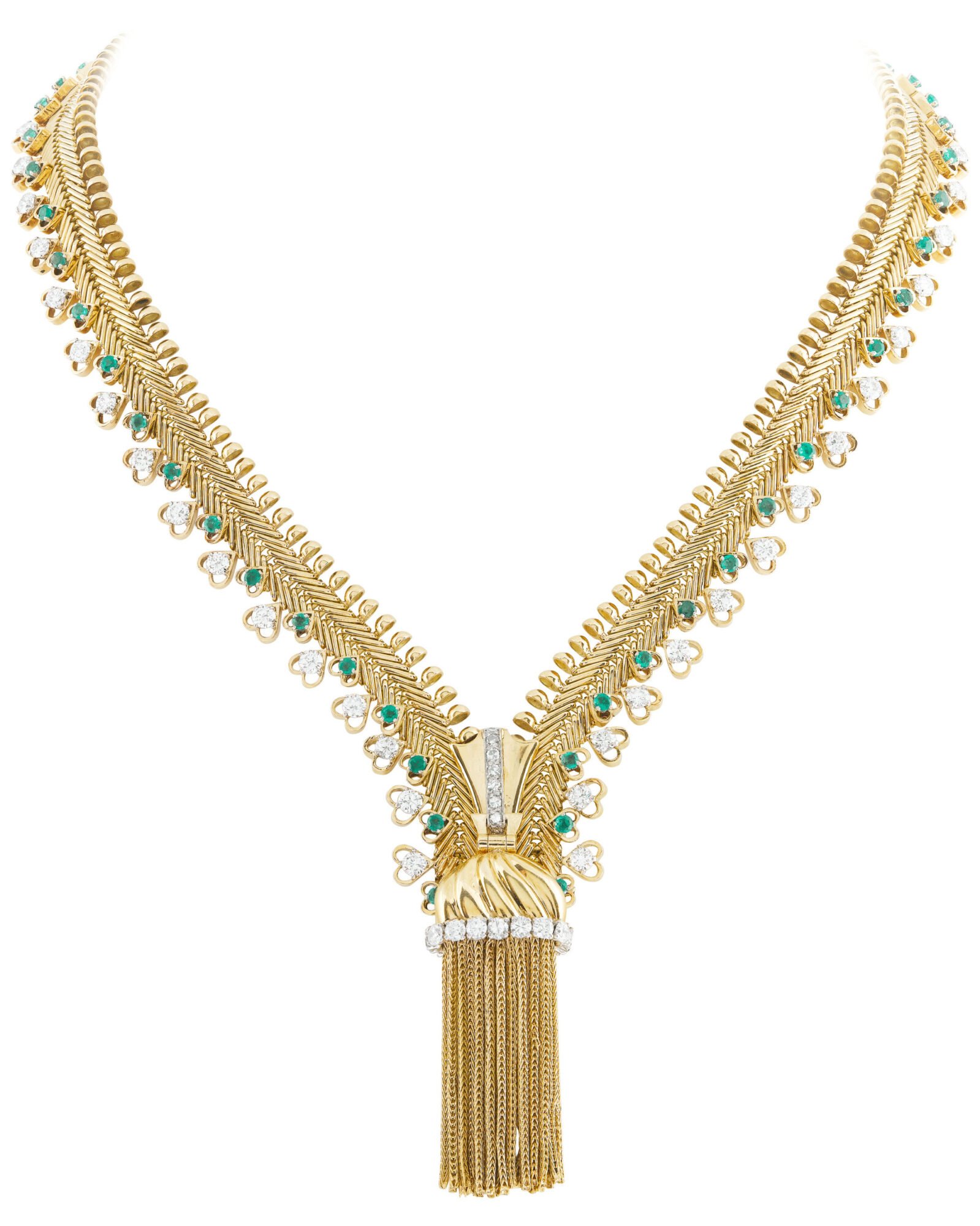
The Zip necklace always thrills, a thoroughly familiar, utilitarian device has been transformed into the most exquisite jewel. Although dating from late 19th century America, the zip was only seen in haute couture from the 1930s, notably in designs by Elsa Schiaparelli. The story behind this iconic piece is that Renée Puissant, artistic director of Van Cleef & Arpels from 1926 to 1942 and the daughter of Alfred Van Cleef, was tasked in 1938 by the Duchess of Windsor to create a jewelled zip for an evening dress; the resulting Zip necklace itself was not commercialised until 1951.
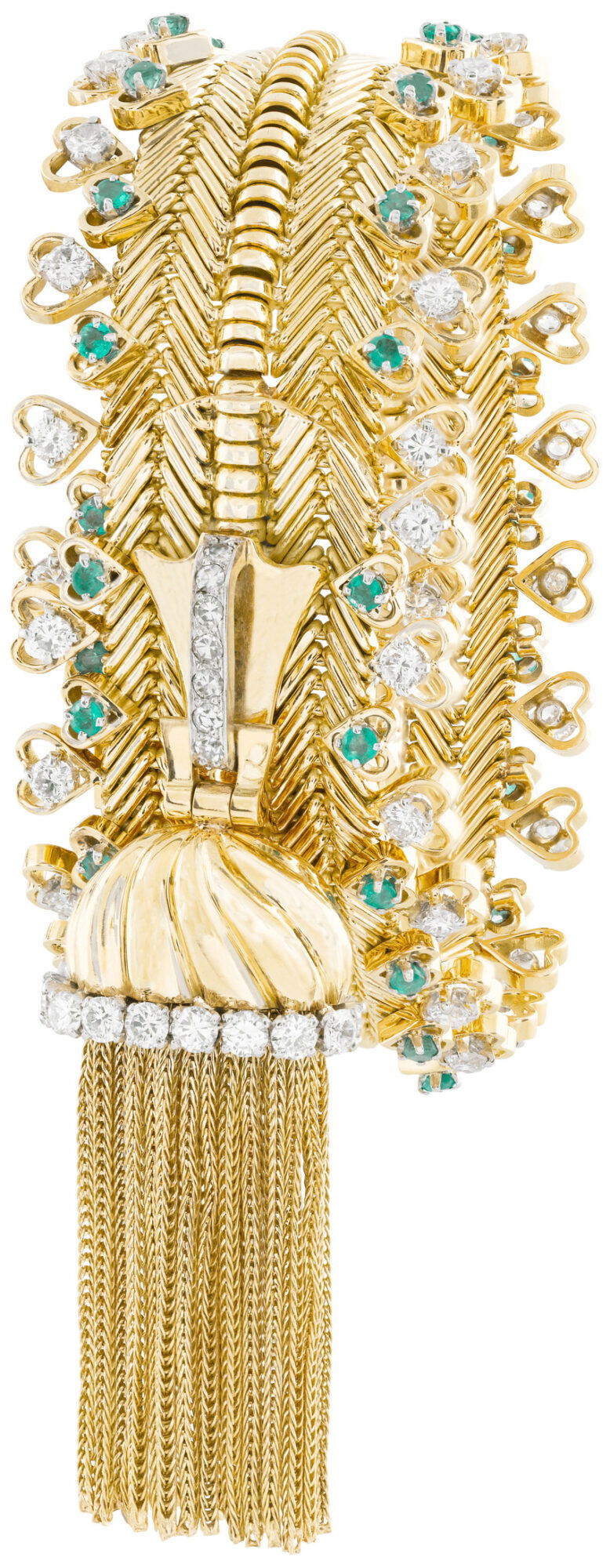
The necklace is a working zipper closure and can be converted to a bracelet by sliding the tassel as one would with an actual zip to close a garment. Very few Zip necklaces were made in the 1950s, this example is dated 1952, in platinum, yellow gold, emeralds and diamonds; the tassel is embellished with delicate, braided gold threads, bringing an elegant sense of movement to the necklace.
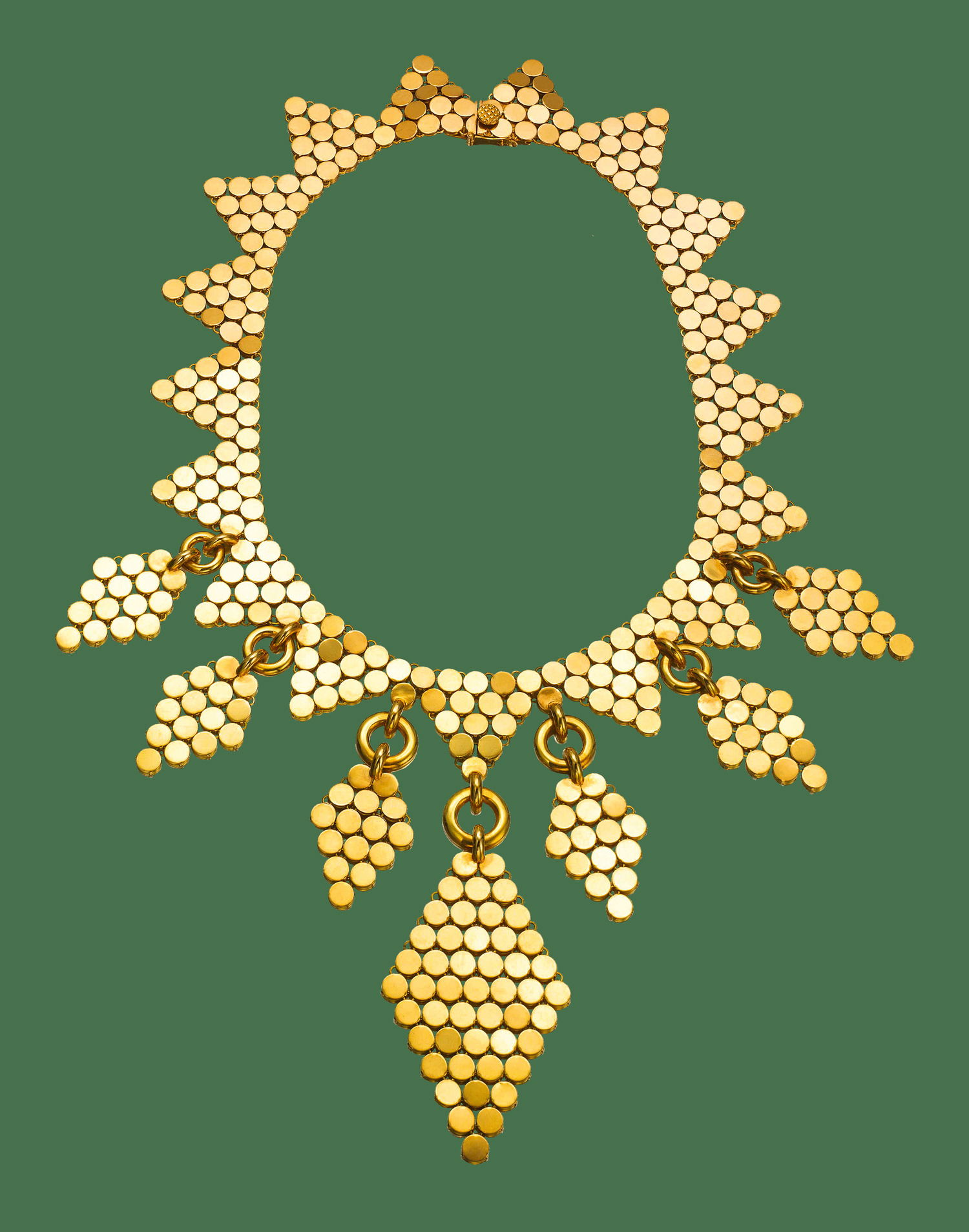
Sequins necklace, 1971, made just a few years after the Zip, and in vivid contrast to this glamorous piece untenable for everyday wear, reveals the new informality in 1960s and ’70s jewellery design. A circle of triangles made up of gold sequins with lozenges, of similar gold sequins, suspended from over sized gold rings. The linked sequins make the necklace supple and fluid, and thoroughly tactile.
In 1966 the Spanish designer Paco Rabanne established his own fashion house – earlier on in his career he produced jewellery for Givenchy, Dior and Balenciaga – and set about designs in metal, plastic and paper, his debut collection was titled: Manifesto: 12 unwearable dresses in contemporary materials. Sequins echoes Rabanne’s outlandish use of rigid components, but is totally wearable and acts almost as a second skin.
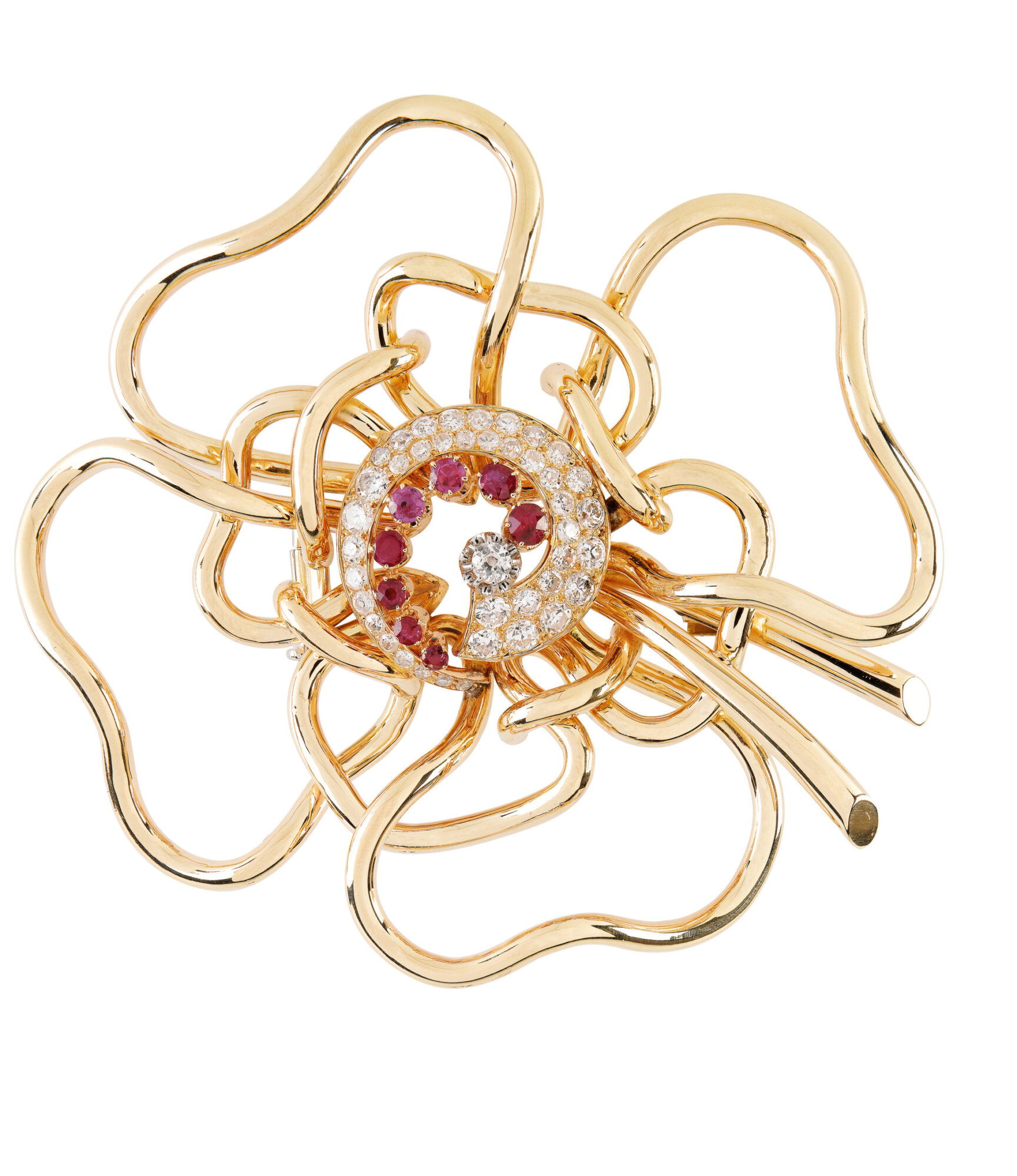
The Silhouette Flower clip, 1937, yellow gold, rubies and diamonds, feels remarkably contemporary; it could be a flower and it could be a ribbon, nature and couture the two major sources of design inspiration for Van Cleef & Arpels. In addition, developments in art of the time can be seen in Silhouette Flower. The American sculptor Alexander Calder (1898-1976) resided in Paris from 1926, when he enrolled in the Académie de la Grande Chaumière, and he later set up a studio in Montparnasse, his circle of friends included the artists Fernand Lèger, Jean Arp and Marcel Duchamp and by 1933 he had returned to live and work in the States. Calder’s abstract sculptures had originally been powered by motors, but he tired of their predictable movements, and in 1932 started hanging his works so that their motion was generated either by touch or air currents. Although obviously a static piece, the undulating gold ribbon of Silhouette Flower evokes gentle motion and demonstrates a daring play of negative space, as seen in Calder’s art of the same period.
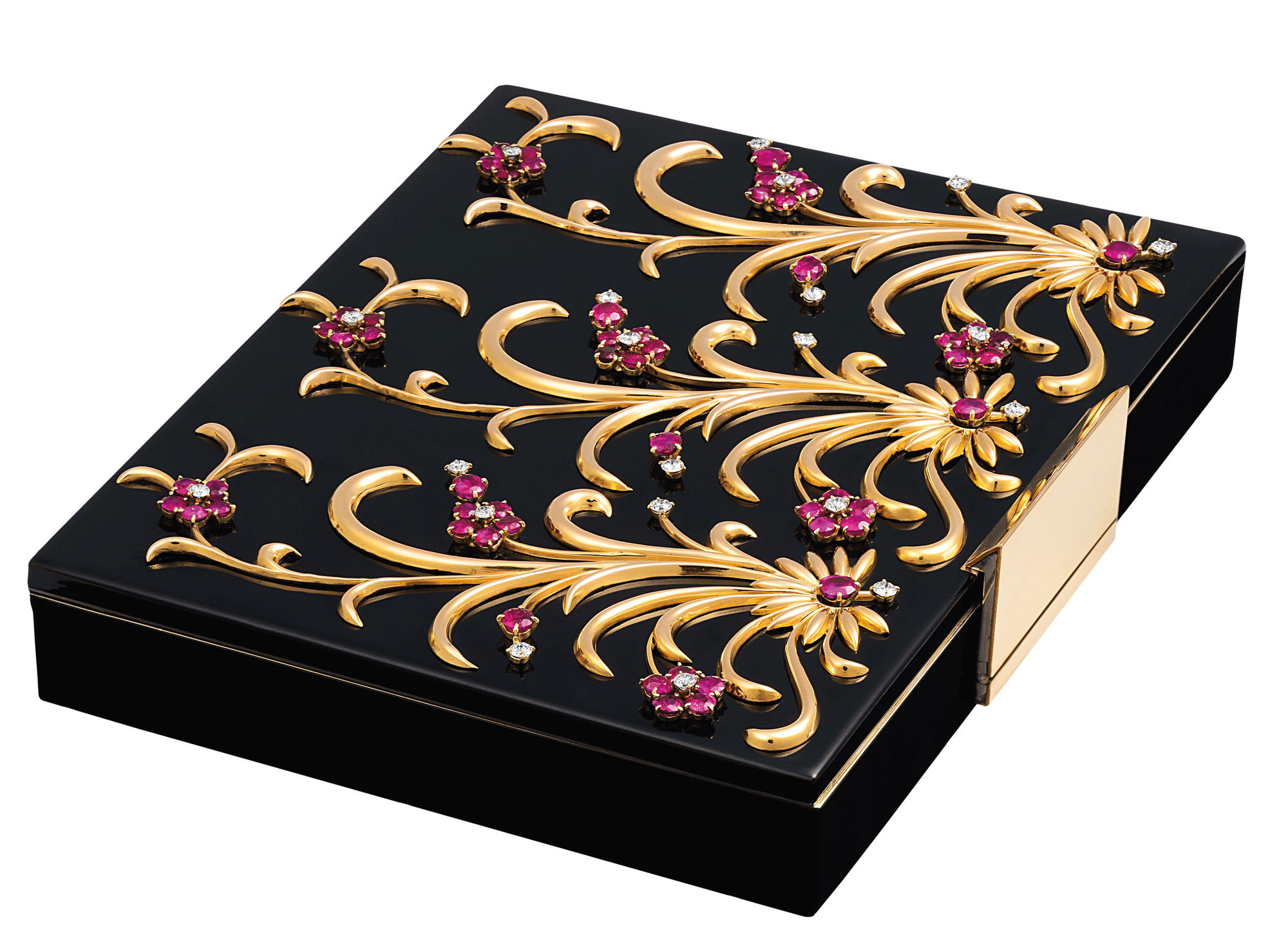
And, finally our pièce de résistance, this stunning black lacquer minaudière from 1939, in yellow gold, rubies and diamonds. The minaudière can be attributed to Charles Arpels who is said to have seen Florence Gould, the wife of Frank Jay Gould, using a tin box to hold small items of makeup. Practicality meets sumptuous luxury in the minaudière, the interior comprises small compartments to hold personal items, whereas the exterior surface gives the jeweller ample scope to decorate in gold, precious stones, semi-precious stones and materials such as coral, onyx and lapis lazuli. Many of Van Cleef & Arpels’ minaudières feature clasps which in some cases can be detached and worn separately as items of jewellery; the clasp here is a super sleek minimalist slice of gleaming gold. Three swaying gold branches with ruby and diamond flowers dance across the minaudière, their heads dipped as if caught in a passing breeze.
The Art of Movement is on view at the Design Museum, London, until 20th October 2022 | Find out more here

